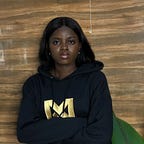A case study of a logistics company
Introduction
Deliverables:
User Research, Story Board, User flow, Lo-fi wireframe, competitive audit, User Interface, User Experience, User persona and Prototype.
Outcome:
Product design of a Logistics App.
Tools Used:
Pen and paper
Figma
Team:
Self-directed, with feedback from peers
Project Duration:
2 weeks
Project Background:
An application that connects Individuals who want to either send or receive goods without being physically present at a store or location, with features that ensure that there is a communication between the rider and the sender/receiver every step of the way.
The Problem:
There has been a rampant issue of people being unable to track their goods or have a rapport with riders handling their goods. A lot of people have searched for a platform where they could send/ receive goods and also communicate with the rider handling their goods to ensure a safe and quick delivery.
The Goal:
An easy to use platform that would let people send or receive goods and still keep track of their goods till it gets to it’s final destination
Research
User Research
To avoid assumptions about who our users are, a qualitative research was carried out.
A usability study and hall way interviews were carried out. The Online vendors and Online shoppers stood out as the main users.
Online Vendors: These are Individuals who sell goods through social media or any other online platform. The Online vendors usually need to transport their goods to their customers.
Online Shoppers: These are individuals who buy stuff from the online vendors. The Online Shoppers usually need to get the goods they paid for or requested for delivered to them.
User Persona
User personas were created through interviews of a few Individuals to show a representation of a large group of people whose goal and characteristics matched that of the end users.
A Persona was created for a food vendor. “Shina” represents a specific user group of “carly Logistics”. It was important to identify this particular group as it helped in pointing out the challenges the food vendors pass through and how these challenges could be solved.
Another Persona was created for an online plant vendor “Ini” who also represented another group of users. This was important as it helped to understand the feelings and needs of online vendors.
Due to time constraint, I decided to focus on the target user group that I collated the most primary data about.
Competitive Audit:
An audit was run on an existing Logistics app, “God is good Logistics App”. This was done to determine how Carly Logistics could compete against an already existing Logistics app.
The Value proposition, features, First impressions and questions were asked. All these helped in improving Carly Logistics App to achieve a competitive advantage.
Story Board:
A big picture story board was created to show the general user experience before venturing on the app. It also captured different interactions that pushed the story forward.
User Flow:
After understanding the user’s needs and goals, a user flow was created to solve those needs.
The user flow answered the following questions:
What is the user trying to accomplish?
What is important to the user and what will give them confidence to continue?
What information would the user need to accomplish the task?
After a thorough research, rough sketches of paper wire frames were created to pick the best option that solved the user problems and gave the users a better experience.
After the best was picked, a low fidelity digital wireframe was created.
Low Fidelity Wireframe
The wire frame showed a bottom navigation bar, an avatar, and a straight to the point home page. The wire frame followed the Gestalt Principles of Proximity and Close region. The principle of proximity posits that things that are close together appear to be more related than things spaced far apart. The principle of Close region states that when objects are located within the same closed region, they are perceived as being grouped together.
Design
Brand Identity
I made the splash screen visually appealing to get users to actually go on the app.
Sign up Screen
Taking cognizance of the frustrations in the user persona that highlighted the long sign up process, I made sure the sign up process was easy and enjoyable for users.
Home Page
Upon landing on the home page, certain information are required to start the pick up/receiving process.
Check Out
After the order has been placed, check out screens were created for users to make payment and input the delivery/pick-up addresses. After which a Tracking number is provided.
The check out screen also provided the estimated cost for the pick up/Delivery.
Tracking Process
Upon check out, they are directed to a tracking screen where calls and messages could be made to either the rider or customer care.
This solved the problem of not being able to have a good rapport with the riders handling the goods and also the problem of inability to track the goods.
Navigation Bar
The Navigation bar was present to provide quick access and ease the user’s experience.
Color Style
Conclusion
The project’s biggest challenge was realizing that during the design process, the scope of the product could change.
After thorough research and gathering of information from the prospective users, Issues and concerns were raised as to why the orders sent out needed to be tracked.
The relevant concerns and issues were taken into consideration and changed into beautiful interfaces that created a better experience for the users.
#casestudy
You can check my other case studies on Behance
https://www.behance.net/glory-bassey
Thank you 🙂
